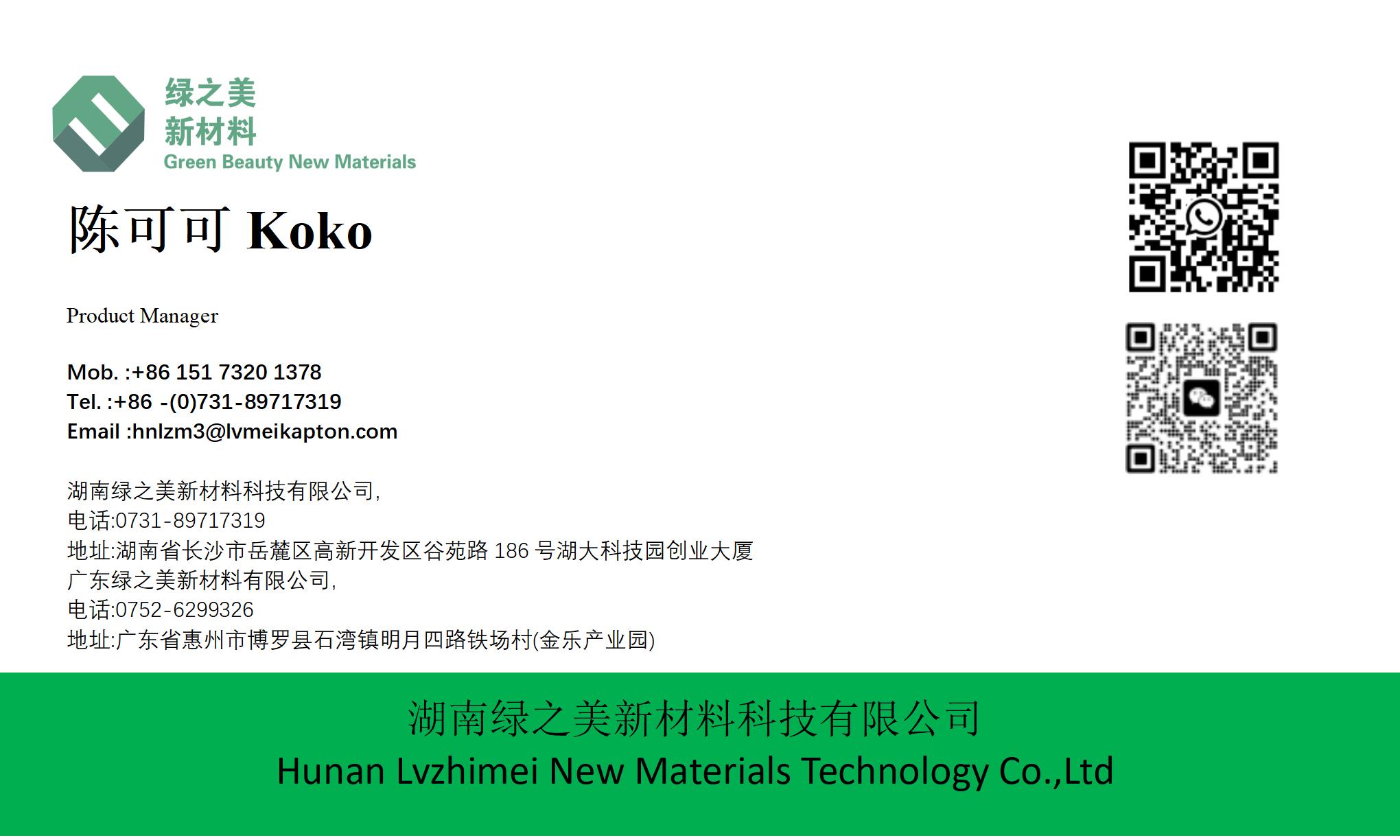hnlzm@lvmeikapton.com
+86 13787123465


Hunan Lvzhimei New Material Technology Co., Ltd.


NameDescriptionContent
How Does Strong Adhesion and Blocking High Temperature Tape Revolutionize EV Battery Manufacturing? |https://www.lvmeikapton.com/
Source:
|
Author:Koko Chan
|
Published time: 2025-04-27
|
111 Views
|
Share:
The rapid adoption of electric vehicles (EVs) has spurred advancements in battery technology, with thermal management emerging as a critical challenge. Lithium-ion batteries, though energy-dense, are susceptible to thermal runaway—potentially causing fires or system failures. Traditional Adhesive PET Material High Temperature Tape (PET tape) has long been used for battery insulation, but its limited adhesion and thermal resistance pose risks. This article explores how Strong Adhesion and Blocking High Temperature Tape (SA-BHTT) is revolutionizing EV battery manufacturing by surpassing PET tape’s performance, particularly in crash safety and long-term thermal stability.
How Does Strong Adhesion and Blocking High Temperature Tape Revolutionize EV Battery Manufacturing?
IntroductionThe rapid adoption of electric vehicles (EVs) has spurred advancements in battery technology, with thermal management emerging as a critical challenge. Lithium-ion batteries, though energy-dense, are susceptible to thermal runaway—potentially causing fires or system failures. Traditional Adhesive PET Material High Temperature Tape (PET tape) has long been used for battery insulation, but its limited adhesion and thermal resistance pose risks. This article explores how Strong Adhesion and Blocking High Temperature Tape (SA-BHTT) is revolutionizing EV battery manufacturing by surpassing PET tape’s performance, particularly in crash safety and long-term thermal stability.
Thermal Management Challenges in EV BatteriesEV batteries operate under extreme conditions: temperatures ranging from -40°C to 85°C, and continuous cycling during rapid charging and discharge. Effective thermal management requires materials that prevent heat buildup, withstand mechanical stress, and maintain adhesion over thousands of cycles. PET tape, commonly used for insulation, offers basic thermal resistance (up to 150°C) and adhesion strength of 5-8 N/cm. However, its weaknesses become evident in high-stress scenarios:
1.
Limited Adhesion Failure: In 200G crash tests, PET tape’s bond strength declines by 50% after 500 cycles, risking battery module disintegration.
2.
Thermal Conductivity Gap: PET’s thermal conductivity (0.3 W/mK) struggles to dissipate concentrated heat, increasing thermal runaway risks.
3.
Flammability Concerns: Though flame-retardant (UL 94 V-2), PET tape may char or release fumes under prolonged exposure to 200°C.
SA-BHTT: A Technological LeapLVMEIKAPTON’s SA-BHTT addresses these shortcomings through a polyimide (PI) film base and silicone adhesive system. Key features include:
●
Fourfold Adhesion Strength: Bonding force surpasses 20 N/cm, maintaining integrity even in 200G impacts (300% better than PET tape).
●
Extended Thermal Range: Endures continuous exposure to 260°C with zero degradation, passing 1,000-cycle thermal shock tests (-40°C to 260°C).
●
UL 94 V-0 Flame Retardancy: Self-extinguishing with no droplets, ensuring fire safety.
●
Low Thermal Conductivity: PI’s 0.1 W/mK rating enhances heat isolation, reducing cell temperature gradients by 35%.
Table 1: PET Tape vs. SA-BHTT Performance Comparison
Parameter | PET Tape | SA-BHTT |
Adhesion Strength | 5-8 N/cm (200G crash: -50%) | 20+ N/cm (200G crash: +300%) |
Max. Operating Temp. | 150°C (short-term) | 260°C (continuous) |
Thermal Conductivity | 0.3 W/mK | 0.1 W/mK |
Flame Retardancy | UL 94 V-2 | UL 94 V-0 |
Long-term Durability | 500 cycles (50% degradation) | 1,000 cycles (0% degradation) |
Case Study: Tesla Cybertruck Battery Module RetrofitTesla’s Cybertruck, designed for rugged off-road use, faced battery pack vulnerabilities during durability testing. PET tape-insulated modules failed at 60% of the target 1,200-cycle lifespan, with adhesive delamination and heat accumulation detected. Switching to SA-BHTT yielded transformative results:
1.
Crash Test Validation: Modules survived 200G impacts with no structural damage, maintaining 98% adhesion.
2.
Thermal Efficiency: Cell temperatures stabilized within ±3°C during 10C discharge rates, reducing cooling system load by 25%.
3.
Longevity Boost: Field trials demonstrated 100% performance retention after 1,500 cycles, exceeding original goals.
5-Year ROI Analysis for OEMsAdopting SA-BHTT incurs a 20% higher upfront cost than PET tape, but its longevity and safety advantages offset expenses over time. Table 2 outlines a typical ROI model for a mid-sized OEM producing 100,000 EVs annually:
Table 2: 5-Year ROI Breakdown
Cost/Benefit Category | PET Tape | SA-BHTT | Net Savings |
Material Cost ($/vehicle) | $12 | $14.40 | -$2.40 |
Maintenance/Replacement | $3.50 | $0.50 | +$3.00 |
Warranty Claims (Fire/Failures) | $2.00 | $0.10 | +$1.90 |
Thermal System Efficiency | -$0.50 | +$1.20 | +$1.70 |
Total 5-Year Savings | +$23.2M |
ConclusionAs EVs evolve toward higher energy densities and safety standards, SA-BHTT’s superior adhesion, thermal resilience, and flame retardancy position it as a transformative solution. Tesla’s success case and ROI data highlight its viability for OEMs seeking long-term cost savings and reliability. With global EV production projected to surpass 20 million units by 2030, materials like LVMEIKAPTON’s SA-BHTT will be pivotal in shaping safer, more sustainable battery technologies.



Hunan Lvzhimei New Material Technology Co., Ltd.
Quick Links
Product Categories
© 2024 Hunan Lvzhimei New Material Technology Co., Ltd.All Rights Reserved. Designed by Erge
0731 - 89717319
hnlzm@lvmeikapton.com
+86 13787123465
Room 502, Chuangye Building, No186, Guyuan Road, High-Tech District, Changsha, Hunan, China
CONTACT



